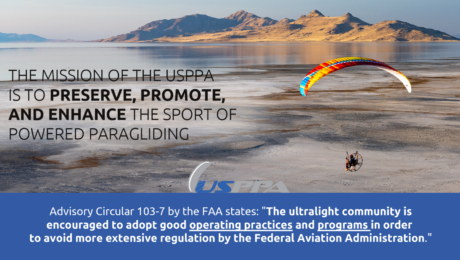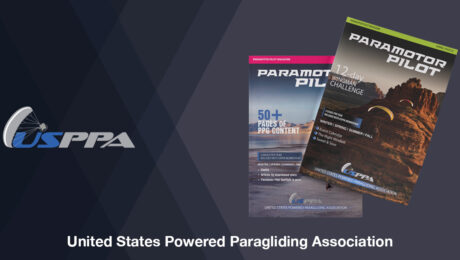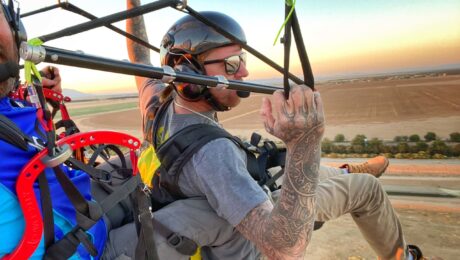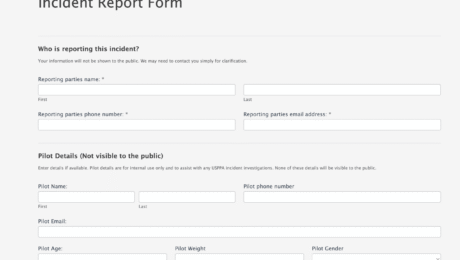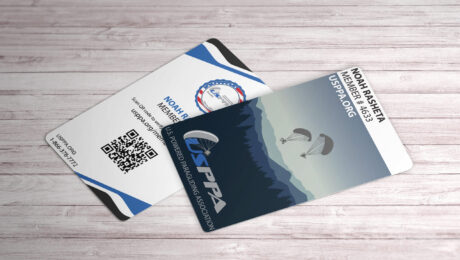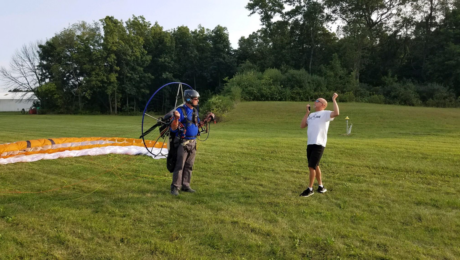It’s nomination time!
Dear USPPA Members,
It’s nomination time! As we approach the end of the current terms for our President and Vice President positions on December 31st, we invite you to nominate candidates.
It has been an honor to serve as President for the last two years. During my tenure, our membership has seen a growth of nearly 50%. I would like to express my gratitude to everyone who contributed to this wonderful achievement. Although I am open to serving another term as President, I strongly believe in the value of fresh perspectives and the energy they bring. This role requires a significant investment of time and effort, and I anticipate having less of both in the upcoming two years compared to the previous two.
Our Vice President, Alexis, remains fully committed to her role and is willing to continue her service. She recognizes the progress and potential of the USPPA and is eager to contribute further. If there are no other nominations challenging her position, she is prepared to serve another term. However, if there are other nominations, Alexis will remain on the ballot and will await the election results. She is eager to continue contributing to the USPPA based on the outcome of the election.
We invite all active members of the USPPA who are passionate about leadership or recognize leadership potential in others to submit nominations. Your voice is important whether you want to introduce new leaders into the organization, reaffirm existing ones, or do both.
Please submit your nominations by October 31st. Together, let’s continue to propel the USPPA to new heights.
For more details and to submit nominations, please click the button below.
Warm regards,
Noah Rasheta
- Published in Updates
BVLOS Rulemaking Statement
An FAA rulemaking committee has proposed a regulatory framework to safely integrate drones that fly beyond visual line of sight (BVLOS) into the current airpace. Their final report includes some recommendations that would place unsafe burdens and unfeasible requirements on the PPG community. This post contains all the information about what is happening, what you can do, and what the USPPA is doing to oppose these recommendations.
Read more: BVLOS Rulemaking StatementWhat is the “final report”?
The FAA’s UAS Beyond Visual Line of Sight (BVLOS) Aviation Rulemaking Committee (ARC) issued a 381 page “Final Report” with several findings and recommendations for how to incorporate BVLOS drones into the current airspace. You can read the full report here:
What are BVLOS drones?
These are drones that operate beyond a visual line of site (there is not a person on the ground watching it and controlling it with a remote control). Think of delivery drones for Amazon or humanitarian aid drones capable of dropping off aid packages or things like that. These are unmanned drones that are much larger, faster, and heavier than the drones we’re all used to seeing.
What changes are they recommending?
A change of right of way rules – The recommendation we are most concerned with is the recommendation to give BVLOS drones a blanket right of way over all manned aircraft at lower altitudes. That would mean that anytime we are flying at low altitude (under 500 ft AGL) it would be our responsibility to see and avoid these drones. Part of their reasoning is that there are simply not a lot of aircraft that fly low, and if there are aircraft, they are using ADS-B to help with collision avoidance.
As you know, PPG more often that not, ARE INDEED flying low (under 500 ft AGL) and ARE NOT using ADS-B. We are not the only ones, the same scenario applies to powered parachutes, ultralights, paragliders, lighter than air, agricultural operations, and many other aircraft that they didn’t really take into consideration while doing their final report. Luckily, we are not alone in voicing our concerns.
Is this a big deal? Why should we care about this?
This is a very big deal! The current “final report” recommends changing right of way rules in a way that places unsafe burdens and unfeasible requirements on on the PPG community. These changes could very well end up requiring us to fundamentally change the way we fly. Imagine what it would be like if we were no longer allowed to fly low. Or what if we were suddenly required to fly with heavy, cumbersome instrumentation that is simply not feasible for our unique form of flight?
We want to avoid these potential scenarios at all costs!
Aside from the inconvenience of changes in regulations, we firmly believe that if we don’t do anything, there will be an increased risk for collisions between powered paragliders and BVLOS drones. It’s not just a matter of new rules, it’s a matter of safety for our sport!
Are we against BVLOS drones?
No, we’re not against BVLOS drones entering the airspace. We understand that drones are part of the future and we welcome this incredible technology into the airspace where we regularly fly. We are concerned about HOW drones get incorporated into our complex airspace and how that will affect the thousands of pilots that occupy this same airspace on a daily basis. It’s not skillful or wise for us to resist BVLOS drones or the drone industry in general. Our strategy is to ensure that the FAA takes powered paragliders and other similar aircraft into consideration when they decide how to incorporate BVLOS drones.
What can we do about this “final report”?
It turns out that the “final report” might not be so final. They had a public meeting last month and realized that there are still a lot of individuals and organizations that are concerned out the report. The good news is that they have decided to host another public meeting of the UAS Beyond Visual Line of Sight (BVLOS) Aviation Rulemaking Committee (ARC) Final Report. We must voice our concerns and share our thoughts before the next meeting! You don’t need to participate in the actual meeting but it would be great if you could post your comment so they take it into consideration. If a lot of us watch or participate in the meeting, they will realize that there are a lot of us. Remember, as a government entity…number matter and the will pay more attention if there are big numbers or participants/comments!
The meeting will be held on July 26, 2022, from 5:30 p.m.-7:30 p.m. Eastern Time.
We need to express our concern to the FAA and to the committee that is responsible for this final report. We can do that by submitting a comment (instructions are posted below). All the details for this meeting can be found here: https://www.federalregister.gov/d/2022-14128
Written comments can still be made AFTER the public meeting. Written comments will be accepted through August 2, 2022. Please submit a comment!
How do I submit a comment?
The easiest way for members of the public to make a comment is to send it in by email.
Send your email to this address: [email protected]
Recommended subject line: Attention Laura E. Gomez / UAS BVLOS ARC
Here is a sample of what the email might say.
To Laura E. Gomez and the UAS BVLOS ARC,
My name is FIRST LAST NAME and I fly a powered paradlider in CITY, STATE.
I recently became aware of the final report issued by the UAS BVLOS Aviation Rulemaking Committee and I have stong concerns about my safety and the potential recommended changes to right of way rules.
I regularly and legally fly at low altitudes in accordance with the regulations outlined in FAR 103. A change in right of way rules would jeapordize my safety since my ultralight vehicle is not equipped to be able to use ADS-B or to maneuver in a way that I can safely avoid a BVLOS drone flying at low altitude.
In order to fly safely, I use the see and avoid method of flying as recommended by the FAA. I highly recommend the FAA to require BVLOS drones to use already existing technology to allow the drone to see and avoid obstacles in the air.
Thank you for taking the time to consider my concerns. If you would like to follow up for further clarification, you can contact me at ENTER YOUR PHONE NUMBER OR EMAIL OR ADDRESS.
Sincerely,
FIRST LAST NAME
What is the USPPA doing about this?
The USPPA, along with several other air sports organizations will be submitting official comments to the FAA via the comments section of this public meeting…just like you! Here is our official statement. We will also print and mail this to the FAA.
Official USPPA Statement
Emailed to Laura E. Gomez at [email protected]
To Laura E. Gomez, the FAA, UAS Beyond Visual Line of Sight (BVLOS) Aviation Rulemaking Committee, and to whomever else it may concern,
The United States Powered Paragliding Association (USPPA) represents close to 7500 current and former members who fly powered paragliders (AKA paramotors) in the United States. Since 2001, the mission of the USPPA has been to preserve, promote, and enhance the sport of powered paragliding. While our mission is primarily focused on the powered paragliding community, we recognize and acknowledge the rapid growth and interest in drones. We also recognize the importance of supporting the development and safe integration of the BVLOS drone industry.
We acknowledge that the BVLOS ARC report offers some good recommendations to the FAA that will promote the safe expansion of BVLOS drone operations. However, the USPPA has significant concerns about changing right of way rules based on equipage or shielded operations. Such a change would certainly place unsafe burdens and unfeasible requirements on not only powered paragliders, but also paragliders, hot air balloons, powered parachutes, antique aircraft, agricultural operations, and many other aircraft that operate regularly, safely, and legally at the low altitudes and geographical locations envisioned in the ARC recommendations.
We believe this sweeping recommendation by the committee to change right of way rules, fails to recognize the reality of just how many aircraft routinely operate at lower altitudes. In a recent DronePro Update, even the FAA recognized the reality of aircraft operations at lower altitudes:
“The risk of midair collisions between drones and traditional aircraft is greatest when they both share the same airspace. The belief that traditional aircraft only operate at altitudes above 500 feet is a common misconception among drone pilots. The regulation that establishes the minimum flying altitude for traditional aircraft is published in 14 CFR 91.119. Except for takeoff and landing, most fixed-wing aircraft typically operate above 500 feet. However, this is not the case with helicopters. Helicopters often fly below 400 feet and routinely share the same airspace as their drone counterparts.” (March 1, 2022)
In addition to helicopters, there are thousands of powered paragliders, paragliders, powered parachutes, and other ultralight aircraft flying at low altitudes every day in uncontrolled airspace. The view that very few aircraft operate at low altitudes is simply not accurate.
The USPPA also has a significant concern with the BVLOS ARC leadership’s recommendation to rely on ADS-B as a tool for collision avoidance and therefore use it as a further justification for changes to right of way rules. ADS-B is unfeasible for powered paragliders and many other low altitude aircraft. There is no provision in the current regulations that would even allow for a powered paraglider to use ADS-B. Furthermore, ADS-B was not originally designed for what the report is proposing and therefore should not be relied upon as an effective way to prevent a collosion between a BVLOS drone and a powered paraglider.
The USPPA believes that all aviators have a shared responsibility to see and avoid other aircraft. Some of the recommendations in the final report seem to aim to distribute the collision avoidance responsibilities by making changes to right of way rules at low altitudes. We believe that these recommendations would NOT result in shared responsibility. In fact, they would result in shifting the risk of collision avoidance to an unwilling/unkowing party that is already routinely and legally flying safely at low altitudes.
In conclusion, the USPPA recommends the following:
- We recommend the FAA require uncrewed aircraft (BVLOS drones) to have some form of detect and avoid capability similar to what is already available in consumer drones like Skydio.
- We recommend that any potential changes to current regulations will meet a shared responsibility to see and avoid other aircraft (both manned and unmanned).
- We recommend maininting current right of way rules based on maneuverability, with no blanket right of way rules for BVLOS drones over manned aircraft without ADS-B.
Sincerely,
USPPA / United States Powered Paragliding Association
Noah Rasheta, President
Alex Donaghy, Vice President
Brad Hill, Treasurer
Heath Woods, Treasurer
Who else is fighting/resisting these recommendations?
I’m happy to report that we are not alone! Several air sport organizations are involved in voicing concern and dissent. Among them are: Aerospace Industries Association, Aircraft Owners and Pilots Association (AOPA), Air Line Pilots Association, General Aviation Manufacturers Association, Helicopter Association International (HAI), Praxis Aerospace Concepts, and several smaller organizations are starting to get involved too: Balloon Federation, USHPA, USPPA, and others.
Important Links/Resources
Link to the UAV BVLOS ARC Final Report – https://www.faa.gov/regulations_policies/rulemaking/committees/documents/media/UAS_BVLOS_ARC_FINAL_REPORT_03102022.pdf
Link to the original public meting held June 22nd – https://www.federalregister.gov/d/2022-10164
Link to the upcoming meeting held July 26th – https://www.federalregister.gov/d/2022-14128
AOPA’s Objection to the Final Report – https://www.aopa.org/news-and-media/all-news/2022/march/17/aopa-objects-to-proposed-drone-rules
Tandem Exemption Renewed
We’re pleased to inform all USPPA members that our Tandem Exemption from the FAA has been renewed. The Federal Aviation Administration (FAA) has granted our petition to extend Exemption No. 9751F.
The FAA has determined that the justification for the issuance of Exemption No. 9751F remains valid with respect to this exemption and is in the public interest. The USPPA is granted an exemption from 14 CFR § 103.1(a) to the extent necessary to allow USPPA members to operate two-place tandem powered paragliders for training purposes, subject to the conditions and limitations outlined in the letter.
The full letter and the exemption are available below (click the thumbnail). Instructors, please make sure to download the newest copy to have it available as required.
The new Incident Database is live!
It’s back and better than before…
One of the most valuable tools of the new USPPA website will be the Incident Database. We have over 430 incident reports dating back to 2006. There is a lot of information and data we can extract from each incident to help us learn and find ways to avoid similar incidents and be safer.
What’s new with the database? The new format for the database and the incident forms will allow us to extract valuable information, visual graphs, charts, and more. With each new incident added to the new database, we will be able to extract key data. These key data points will help us to improve the syllabus, best practices, and more. For now, the database contains all the entries from the old website but with each new entry, using this new form, we will be able to create graphs and charts.
If you had an incident or know of an incident, please consider filling out the form. All sensitive information such as names and contact information is kept private and is not visible to the public. Thank you!
The ultimate goal of this tool is to increase safety.
You will find the incident database in the menu under “resources”.
- Published in Updates
New Membership Cards Coming Soon
We’re excited to announce that new membership cards are in the works. For the time being, we are not sending out any membership cards because we’re redesigning them. The new cards will be plastic and of high quality. They will contain a unique URL and custom QR code that will allow your membership status and ratings to be displayed on any smartphone. To ensure you receive yours, please update your address in the menu under “Magazine” and then “Update your address for the magazine”. The cards will go to the same address we have for the magazine. Thank you!
- Published in Updates
Instructor Clinic – EFD 2022
Becoming an Instructor
It’s way more than just a rating. It’s valuable tips and techniques that will help make you more effective. You will learn the best practices to help your students quickly learn, survive, and thrive in this vulnerable time of their education.
Over the years a lot has been learned about what works and what doesn’t. This clinic will improve your instruction by sharing that wealth of information along with earning your instructor rating for those who qualify.
You’ll appreciate the course as much as your students will appreciate you having the knowledge.
$900 –USPPA Powered Paragliding Instructor Clinic
Tuesday-Thursday, Sept 20-22, 2022 during the Endless Foot Drag Fly-In with Paul Cooley
Please contact Paul at (608) 354-7812 or [email protected] to register for this instructor clinic
Candidates should have a PPG3 rating and have done at least 5 Days (20 hours) of Apprentice work with a USPPA (or USHPA, ASC) Certified Instructor prior to the Clinic.
A PPG3 rating can possibly be administered concurrently with the Clinic for those who have the skills and requirements, but only if there is enough time. There may be a waiting period after the clinic for these pilots to receive their Instructor rating (180 days).
PPG Instructor Experience and Minimums:
- One year of flying using a paramotor.
- 120 flights using a paramotor.
- 45 flying days using a paramotor.
- Has had a USPPA PPG3 rating for at least 180 days.
- Pilots wishing to be able to teach Wheeled Launch techniques must also have their USPPA PPG3 rating for Wheeled Launch and have at least 60 flights.
- 50 solo airtime hours.
- Agrees to apply minimum training standards prior to student instruction, flight and other areas as appropriate.
- Adheres to “Instructor Commitment Letter” whenever doing instruction for USPPA rating.
Preparation: There will be some homework and preparation for each attendee so that we can get the most out of our time together. Once you register, we will be sending you more information about the assignments, including syllabus and study materials. You should also begin an Apprenticeship in preparation for the Instructor Clinic. This is a very important part of your training to become an Instructor since it gives you hands-on experience working with real PPG students. This is usually done with your local USPPA Instructor. You will need at least 20 hours working with them to satisfy those requirements.
Please note: Simply attending and participating in this clinic does not guarantee an Instructor Rating. You must have all of the qualifications and demonstrate instructing skills to the Instructor Administrator(s) satisfaction in order to attain this rating. Also, a minimum number of participants are needed to make the clinic work. Please check with us in advance of any clinic you may have enrolled in before you make your travel plans.
Please contact Paul Cooley at (608) 354-7812 or [email protected].
The original post is available here: http://www.madcityparagliding.com/instructor-clinic—efd.html
- Published in Organizational, Training Updates, Updates, USPPA Events
